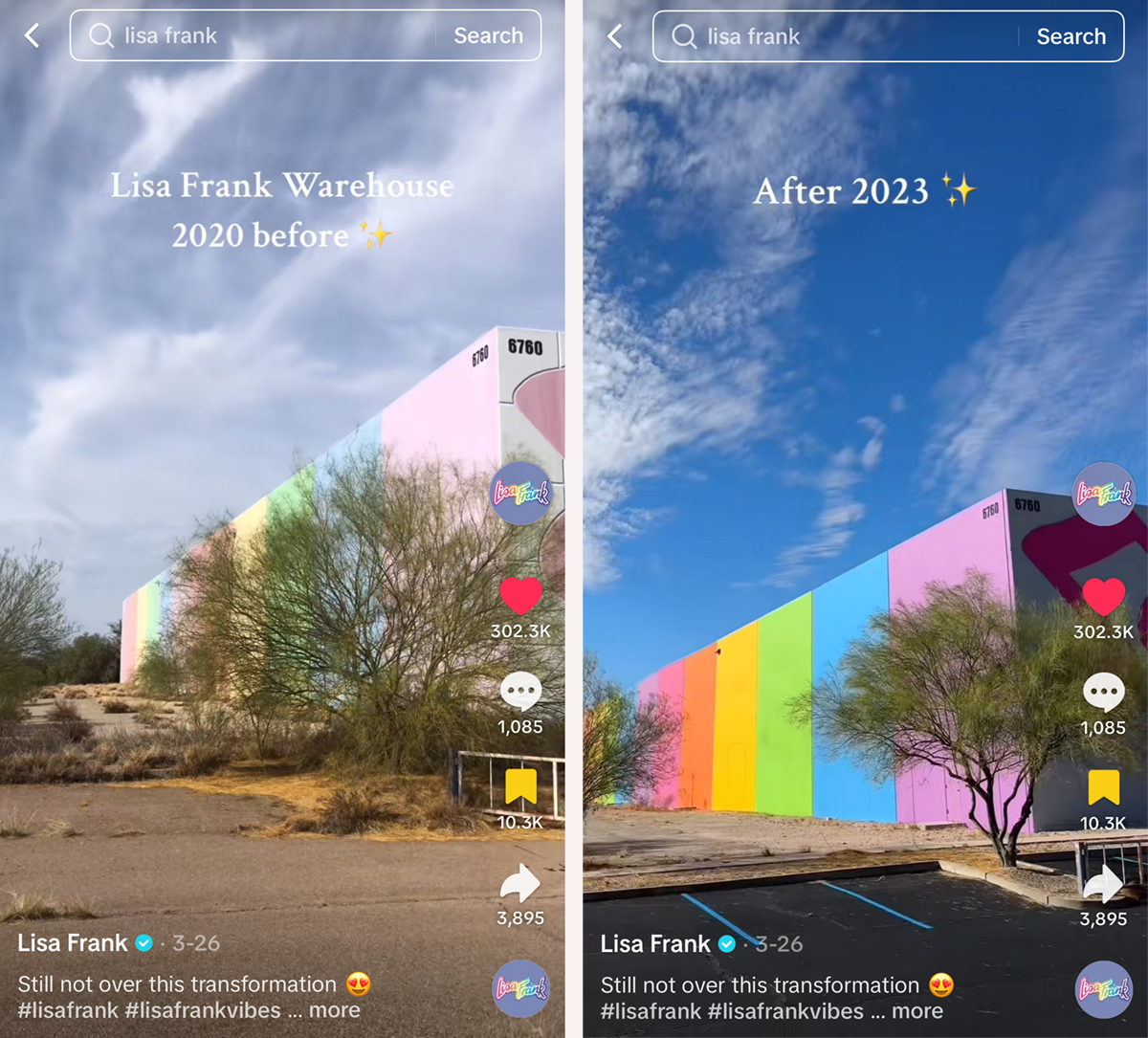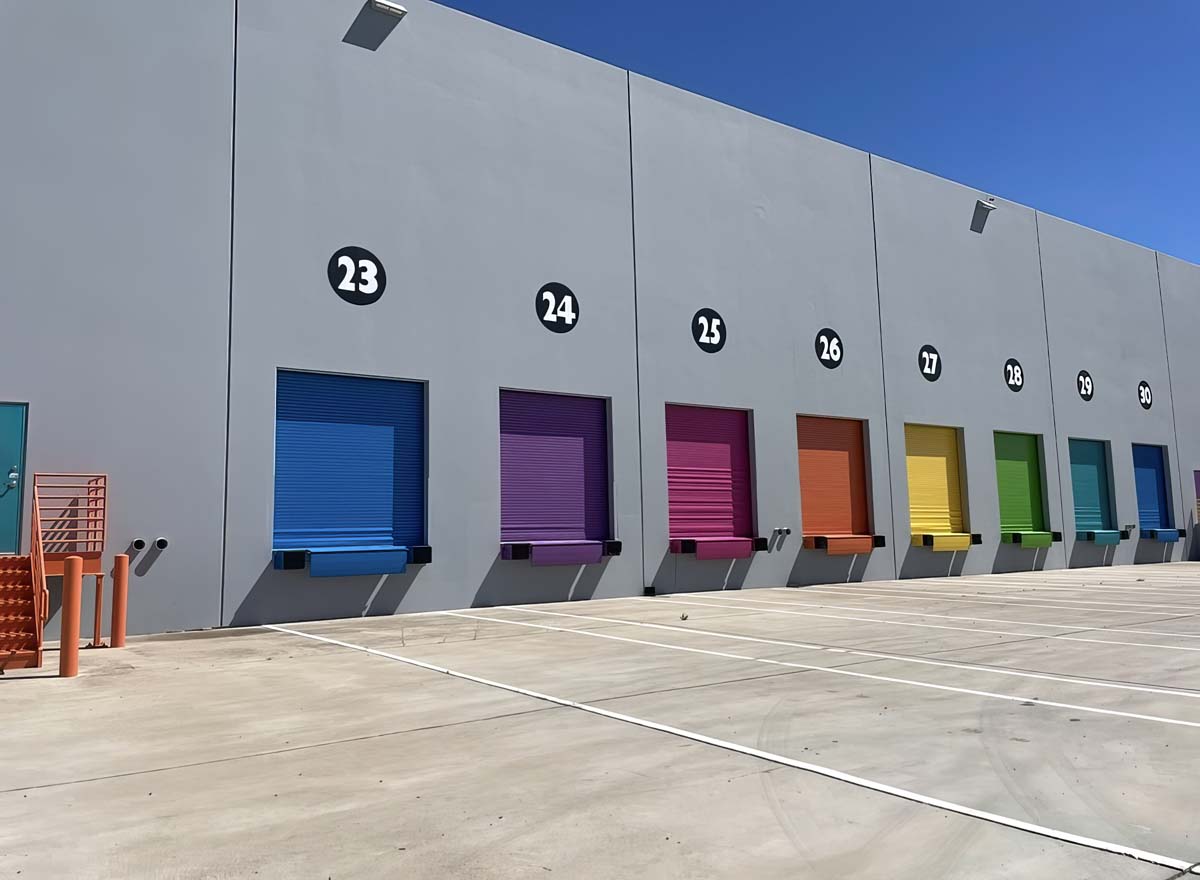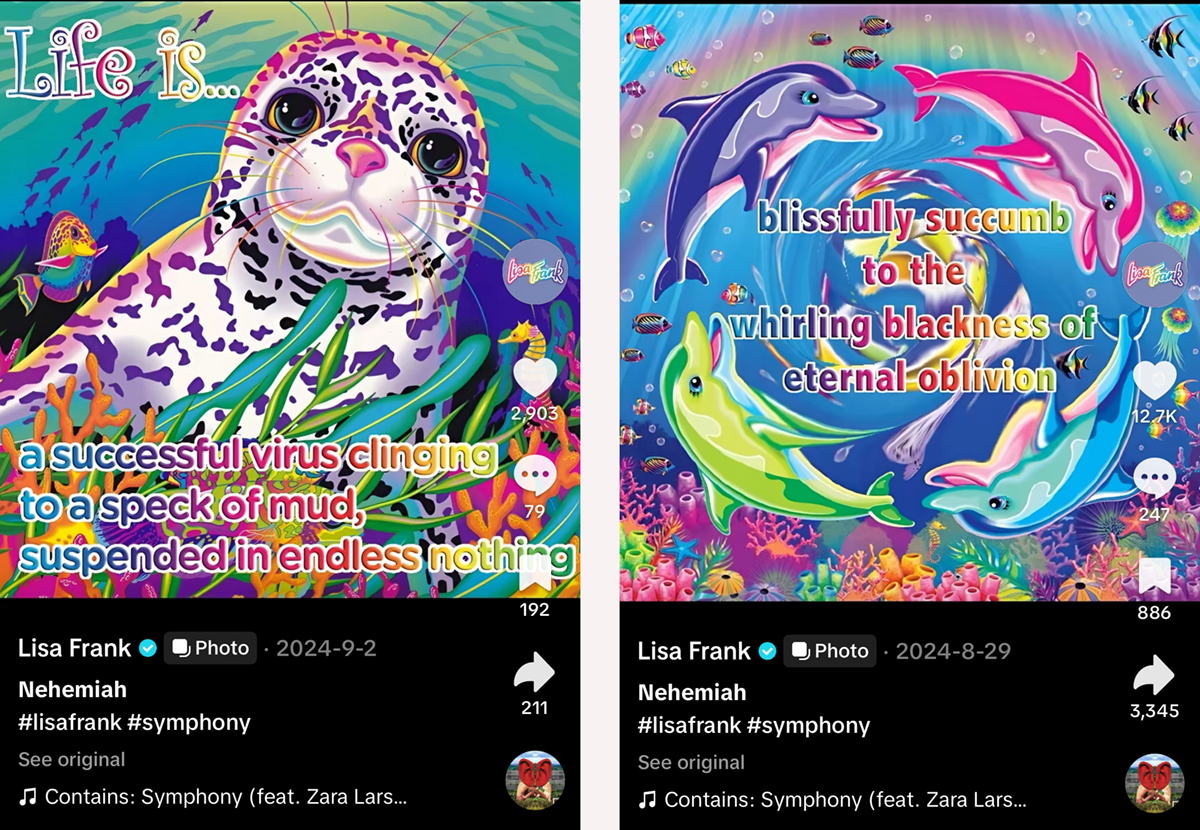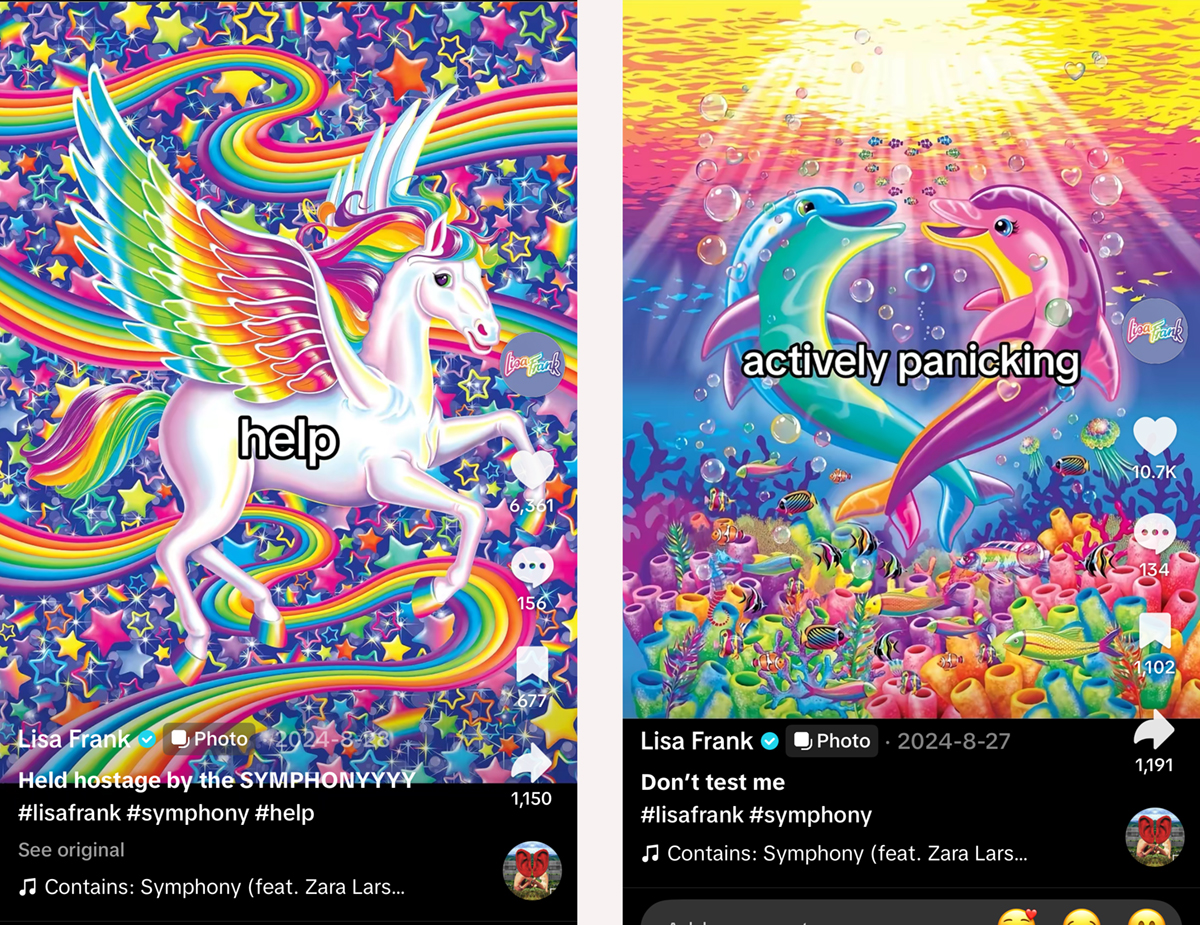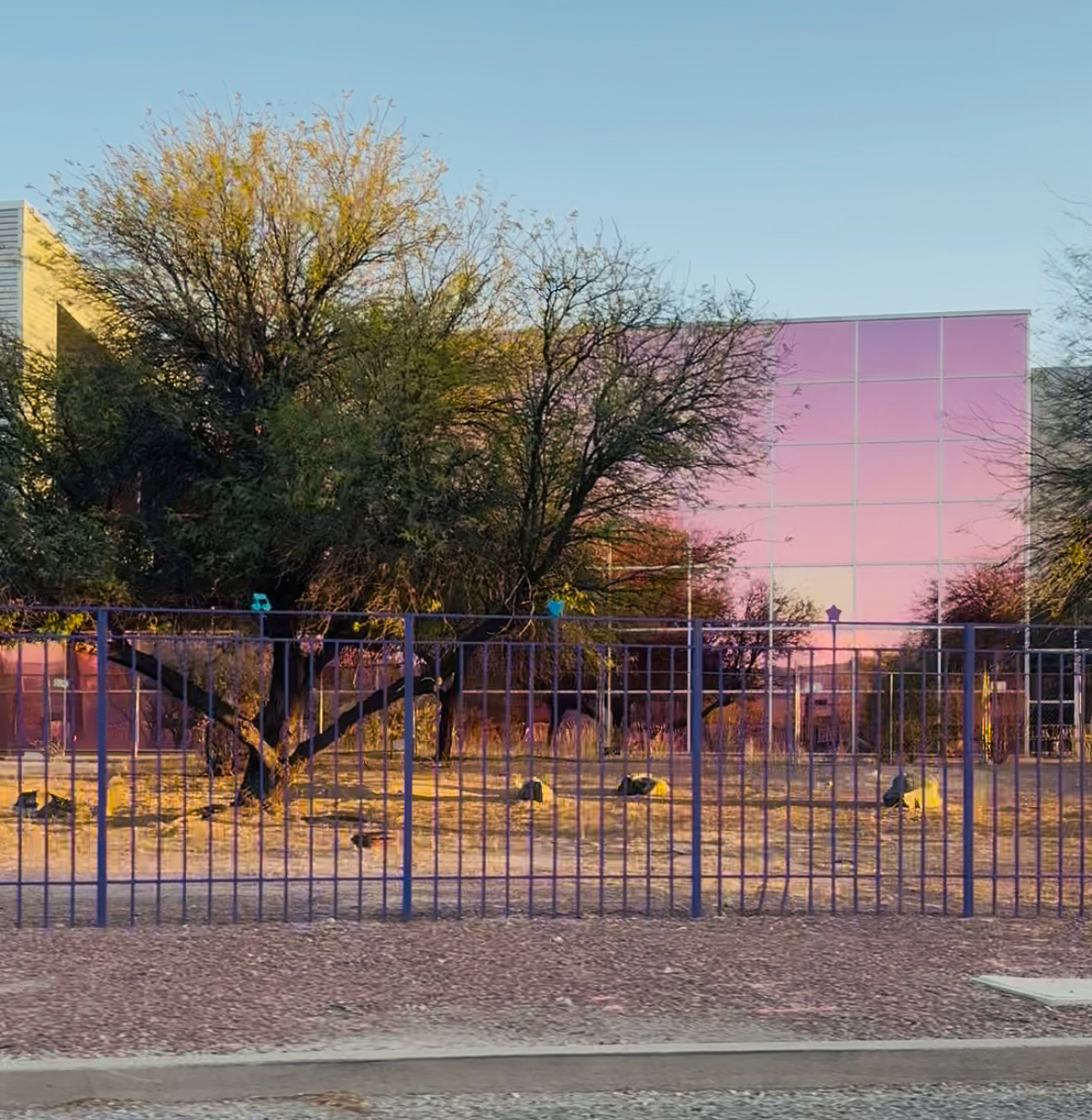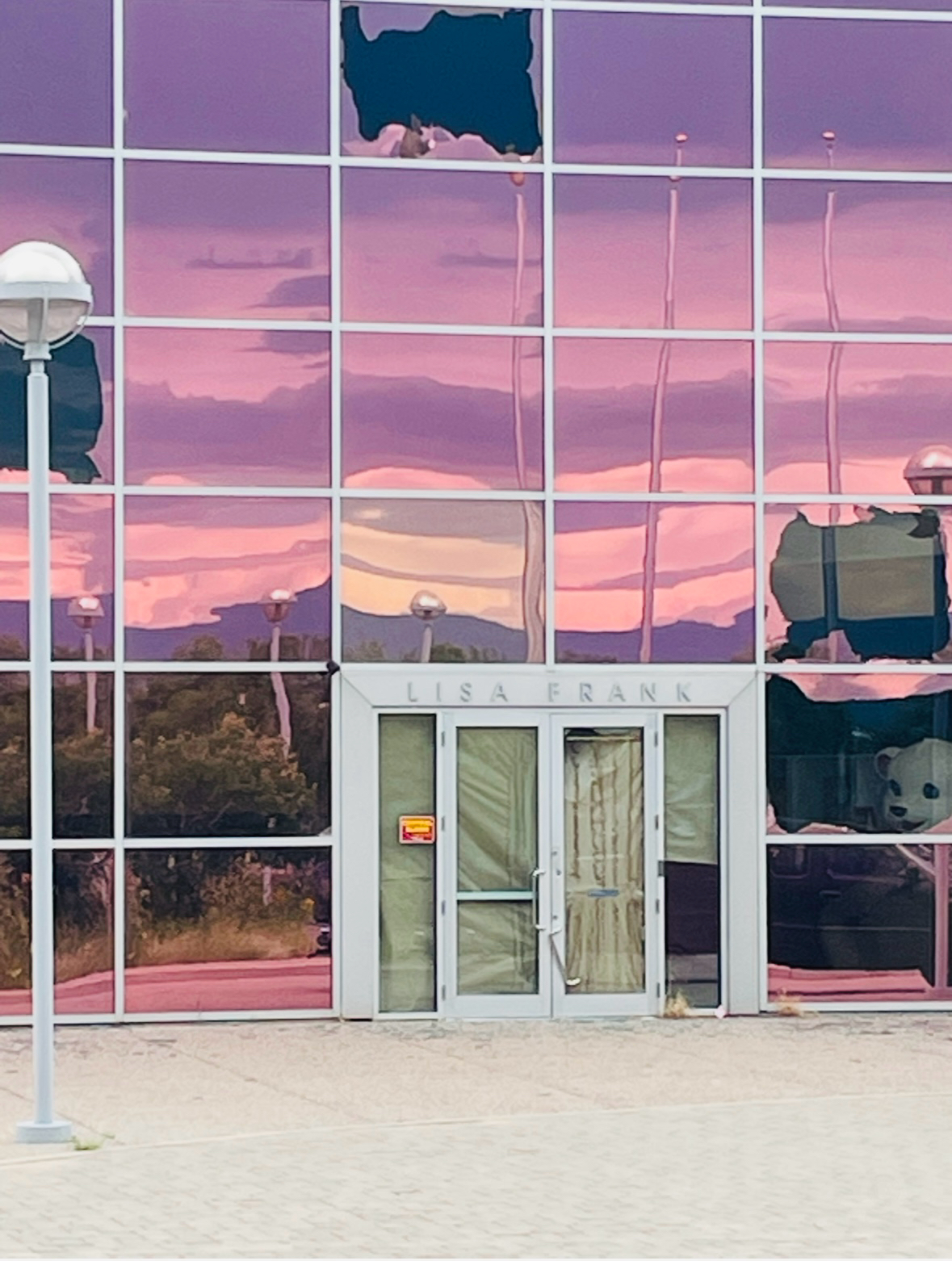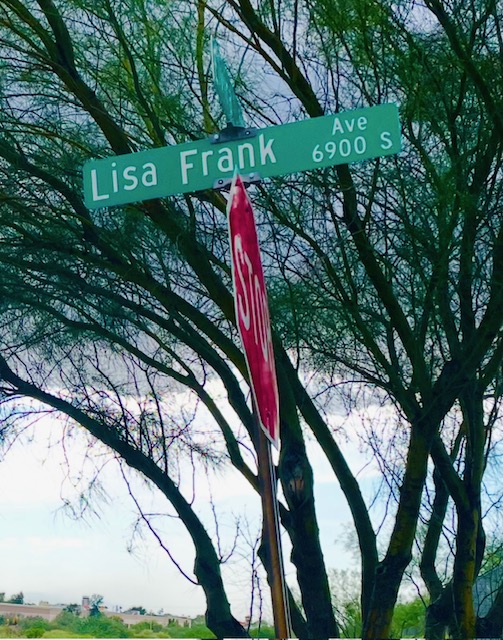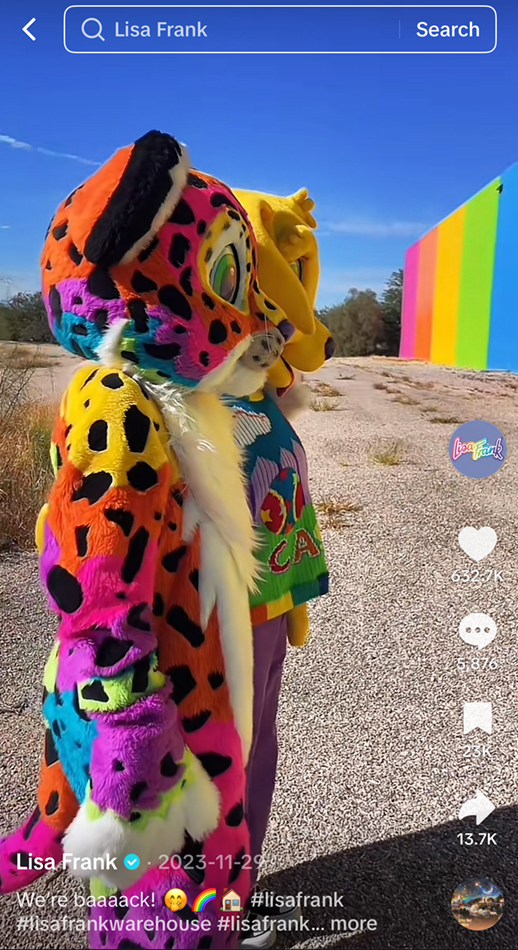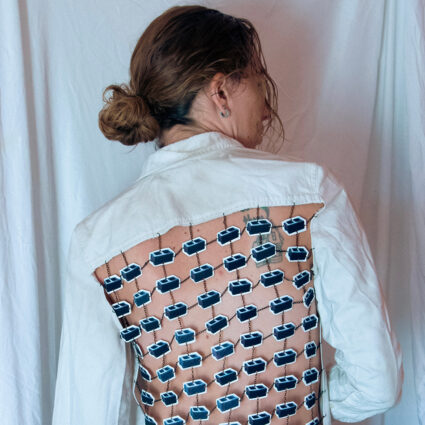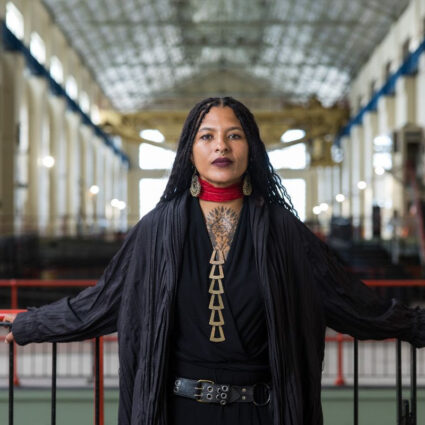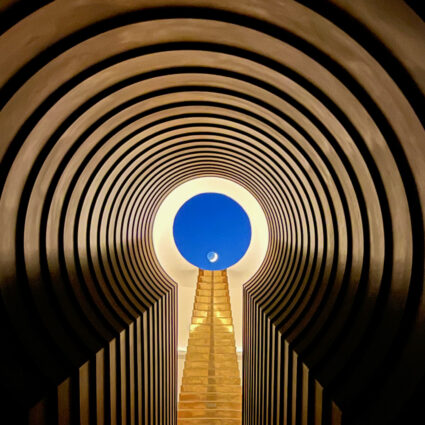The Lisa Frank warehouse, headquartered in Tucson, Arizona, offers up a rainbow-bedazzled mirror to the emptiness of the American dream.

A TikTok user is standing in front of the fence that surrounds the warehouse located at 6760 South Lisa Frank Avenue, in Tucson, Arizona, grinning from ear to ear.
Painted in the eye-popping rainbow of colors associated with the Lisa Frank brand—the stationery supplier popular in the ’80s and ’90s for its adorable animals rendered in dazzling polychrome—the massive industrial warehouse is still home to Lisa Frank, Inc., and is something of a destination for devotees.
“It’s located by the airport so anytime I’m at the airport for any reason… I have to come and check it out,” reports the TikTok fan, filming the perimeter of the building and offering a status update. There are new air ducts emerging from some of the loading bays, she notices, and the brightly painted walls have been freshened up. “I do feel like more is broken,” she says, referring to the rose pink glass outside the office area, much of it boarded up with plywood panels.
The warehouse dates to 1996, and at its height employed around 350 people. Lisa Frank, a University of Arizona graduate, started the business in Tucson in 1979. She grew up in Detroit in a family of art enthusiasts, who collected psychedelic Pop Art by Peter Max and the trippy Op Art of Richard Anuszkiewicz.
Following a spate of legal battles and declining business, Frank’s facility shuttered in 2013, right around the time Jezebel published an exposé on the business’s abusive work culture titled “Inside the Rainbow Gulag.” The building was put up for sale, and Tucsonians watched as the warehouse gradually fell into disrepair.
A 2015 interview revealed that Frank has no desire to be a manufacturer again, and only licenses out the designs, which, given that ’90s nostalgia has been peaking for a while now, would be ripe for a resurgence.

In 2018, @LisaFrank joined Instagram, then TikTok in 2020. The content is cheeky, ironic, aware of its own absurdity, and awkwardly acknowledging the fact that the company doesn’t seem to be making any actual products anymore.
Then in November 2023, a TikTok proclamation: “We’re baaaack!”
In the video, two flourescent mascots stand arm in arm in front of the freshly painted warehouse. A local Tucson news station amplified the message, highlighting a few local job listings.
The Lisa Frank brand has become a constant stream of content issuing out of a cavernous, empty warehouse—a microcosm of American industry.
In 2024, the company was back in the headlines with the release of the Amazon Prime docuseries Glitter and Greed: the Lisa Frank Story, a hatchet job. Frank is notably absent, offering only a written statement to the producers, which ends on a ringing note of optimism: “I’m so excited about the future, as the next generation takes the helm. Stay tuned—the best has yet to come!”
As of today, it seems only the TikToks keep flowing. The Lisa Frank furries perform viral dance trends and everybody asks when they’ll bring back the stationery. Space in the warehouse is still available for lease, 200,000 square feet of it, in fact.
In essence, the Lisa Frank brand has become a constant stream of content issuing out of a cavernous, empty warehouse—a microcosm of American industry.
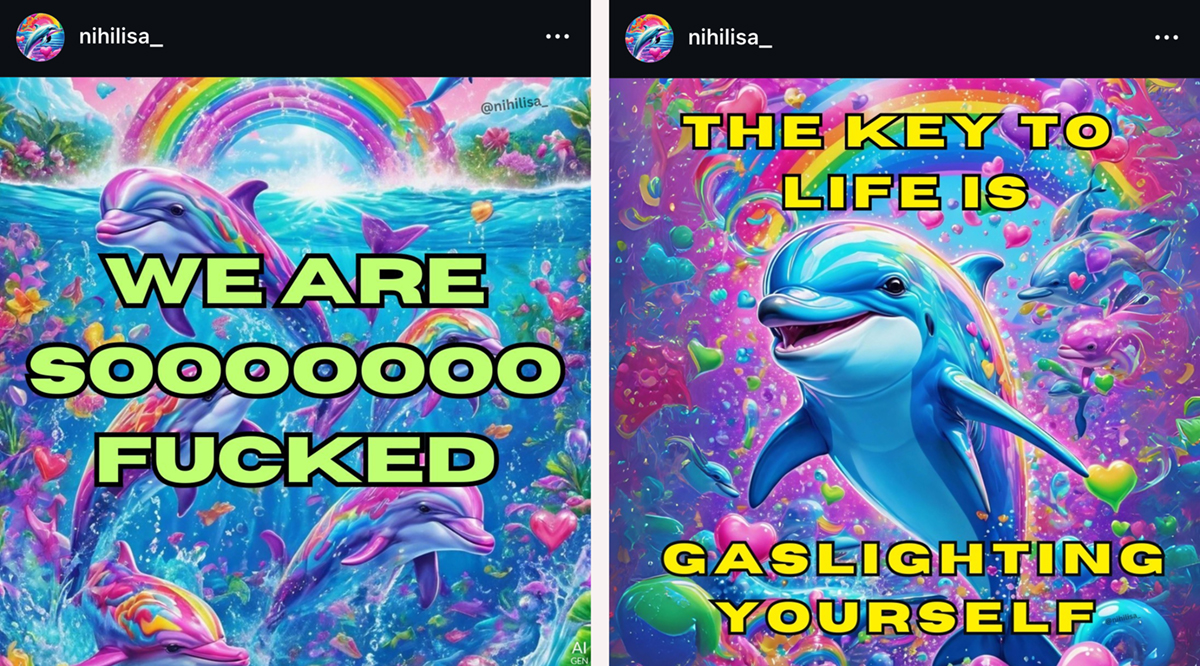
Even the aesthetic seems indicative of a deeper malaise, an anachronistic optimism glazing over a dark reality. A hyperchrome simulacrum to distract us from impending extinction.
“WE ARE SOOOOOOO FUCKED” reads the text on a post-election Instagram post by meme account @nihilisa_, an AI-generated, Lisa Frank–inspired dolphin character frolicking under a chunky rainbow. It’s a fitting representation of the national zeitgeist: in the Tumblr era of the 2010s, a blog called “Lisa Frankfurt School” slapped philosophy puns atop Frank’s work; now we’ve sunk into abject despair.
The social media team at Lisa Frank seems to understand this, overlaying recent Lisa Frank designs with messages of ennui.
But the tension between brand aesthetic and messaging isn’t without its hiccups. Last summer, at the dizzying height of a viral TikTok dolphin-meme moment, Lisa Frank’s social media manager seemed to suffer a mental breakdown, posting the meme again and again with increasingly futile messages, before finally posting: “I just lost my job.” (The account went silent for weeks after that.)
Despite it all, many fans seem to hold out hope that “the best has yet to come,” or at least that their neon ’90s reverie can still be relived.
“It’s so beautiful. I’d love for this place to open back up,” the TikToker daydreams in a video, surveying the warehouse from behind the purple fence. “I’m picturing a ‘Lisa Frank Fun Center.’ It could have a Lisa Frank–themed roller skating rink, bowling alley, karaoke room, and then of course a store where you could get all the things.”

